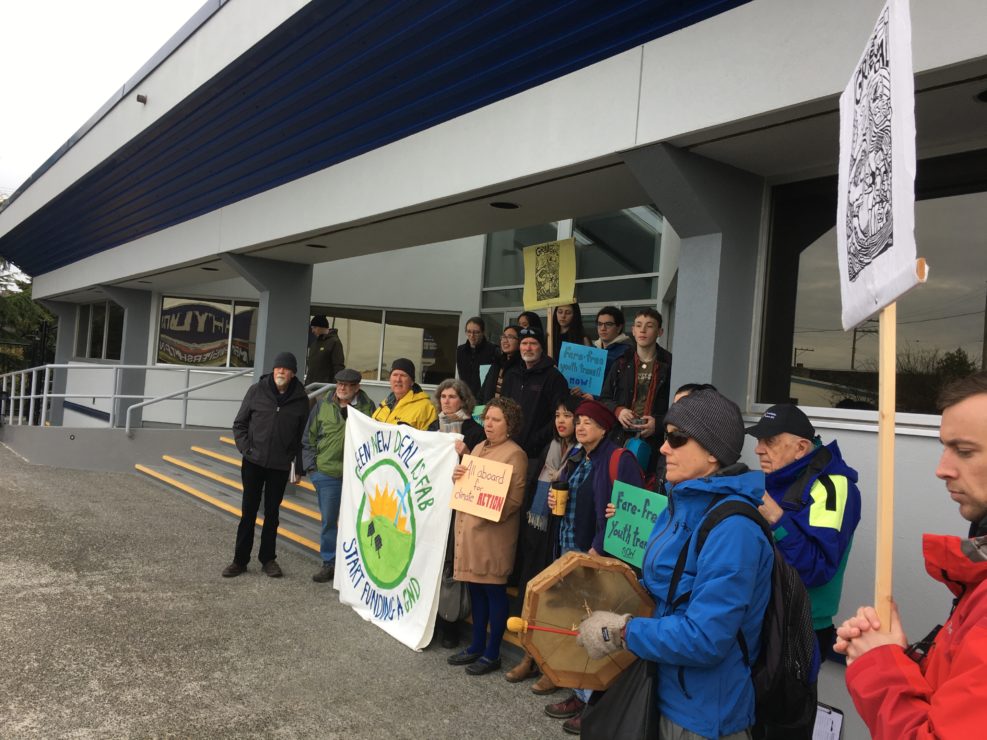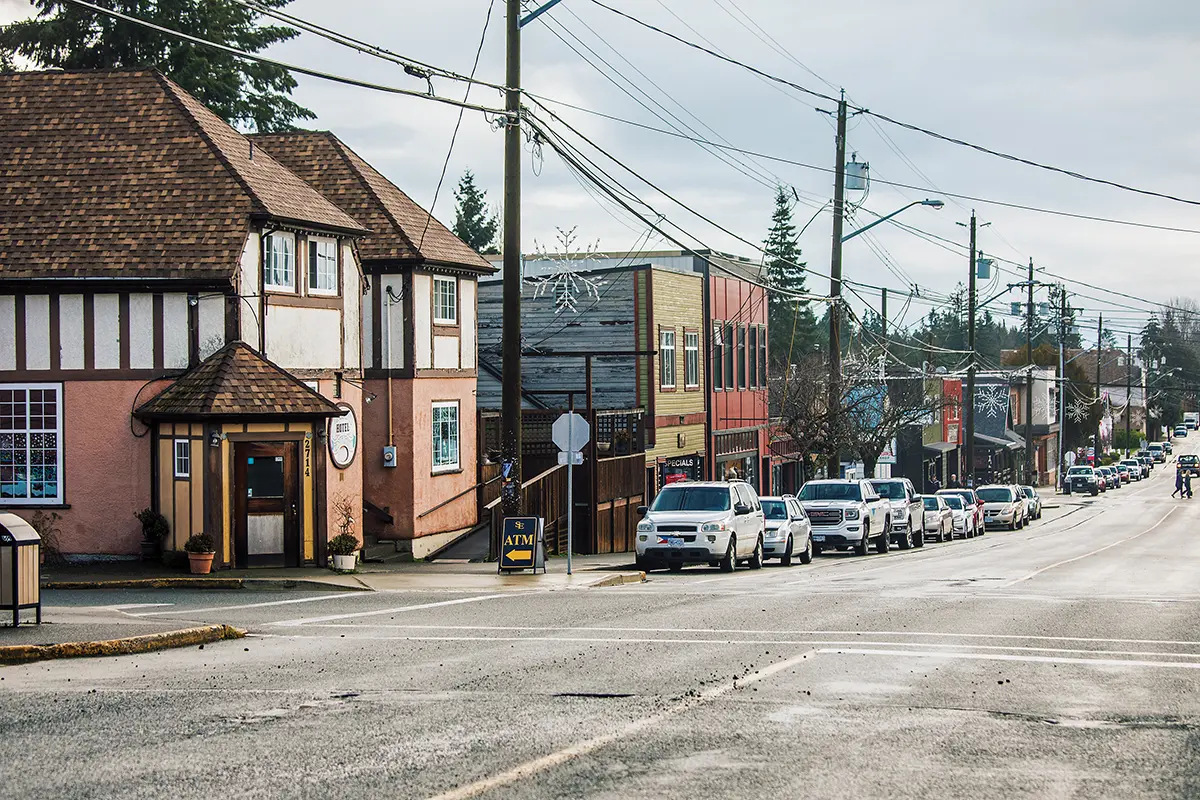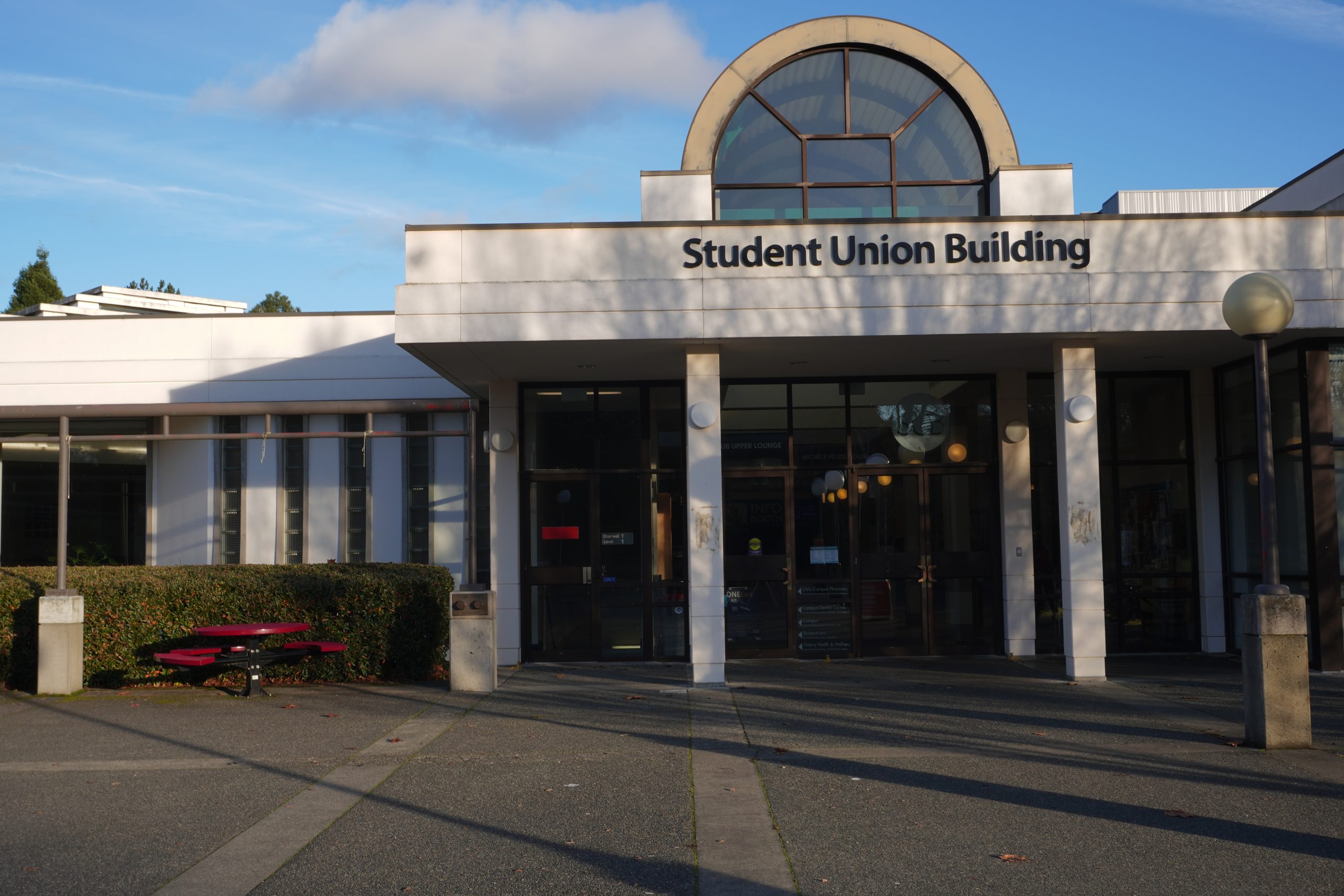Vote came as seniors, students, climate activists gathered outside BC Transit headquarters

Ava Kasianchuk and Callum Rudyk should be in school, halfway through their block one class and sitting at their desks.
Instead, on a Tuesday morning in late-February outside the BC Transit headquarters, the two teenagers from Esquimalt high school hold signs in their hands — advocating for the Transit Commissioners from the Victoria Regional Transit Commission to approve a motion that would expand fare-free transit for all youth under 18 in the Capital Region District (CRD).
In July, the city of Victoria approved a free public transit pass for youth under the age of 18, and absorbed the cost of the $45 per month bus passes. Victoria launched the program in December, and the Times-Colonist reported that over 2 400 youth in Victoria had signed up for the free transit program in January.
Those under 18 living outside of Victoria have not been able to sign up for the program, and still will not be able to. The motion first failed to pass when it was last brought up at a transit commission meeting in the summer, and was defeated once again on Feb. 25.
In August, the eight-member Victoria Regional Transit Commission — which includes local elected officials such as Saanich Mayor Fred Haynes and Victoria Mayor Lisa Helps — voted four to four when asked to approve a fare-free youth transit pilot program for the entire CRD. Among the concerns of those who voted against the motion in the summer is where cities would find money to fund the initiative.
Saanich Councillor Susan Brice, chair of the Victoria Regional Transit Commission, told the Times-Colonist last month that by scrapping fare payment for youth the commission risks not finding funding for other initiatives such as moving to an all-electric fleet and expanding service.
In Victoria, the funding for this program didn’t come from tax increases, but from parking revenue — which brings in about $8 million for the city. Last May, Victoria also decided to charge car users for parking on Sundays, which added extra money to help fund the project.
However, with the success of Victoria’s fare free bus pass, Helps asked the transit commission to revisit the issue on Feb. 25, but the motion was defeated.
About 30 people — ranging in age from students to seniors — gathered outside to chant and hold signs while Transit Commissioners met inside. The rally was hosted by Climate Justice Victoria, a group of climate activists with goals to reduce local emissions, who saw the event as a social justice movement to spark change as the world faces a climate emergency.
“For climate justice, the key is linking the issue the climate emergency and the issue of social equity together, because if we are going to beat the system that brought us into the climate crisis we need to get at the root of the things that foster division in us and drive a system into haves and have nots,” said Patrick Schreck, Climate Justice Victoria organizer.
Matt Hulse, an organizer with Climate Justice Victoria, says the commissioners should look at how other cities across Canada and the world have opened up free transit systems.
Specifically, Hulse, who is originally from Kingston, Ont., a city that recently launched a fair-free transit system for high schoolers this year, pointed at his hometown as an example to make the system work here and potentially partner with other groups. Kingston won a community sustainability award in 2018 from the Federation of Canadian Municipalities for their high school bus pass.
“Kingston, Ontario did this a few years ago,” Hulse said. “They entered a partnership with a few local school boards, and some of those school boards chipped in some money because they get a benefit from reducing the bus fees they were paying to take their kids on field trips, and also they realized it was a good idea.”
Another Climate Justice Victoria organizer, Aven Knutson, said the province can allocate money from programs they fund for car drivers such as road or highway expansion into a fare free transit system.
“They always say that if you want a service you should pay directly for that service, but that doesn’t seem to apply when people have personal vehicles and we’re pouring millions of dollars into expanding roads and making traffic flow more smoothly,” says Knutson.
“If we can pour our money into those [plans] supporting personal vehicle use, why can’t we take that money and instead put it into a longer thinking strategy and invest in sustainable transportation?”
When asked what she would say to Transit Commissioners who didn’t support the fare-free transit plan, Kasianchuk says it’s unfair that a city like Victoria — which makes up a third of the CRD’s population — has free transit for youth while other municipalities do not.
“I have friends who live way out in Saanich, I live in Saanich, but I also have friends who live in Fernwood, and I have friends who live in Langford and Metchosin, and it’s just not fair to us when we see our friends and classmates getting free transit,” she said.








